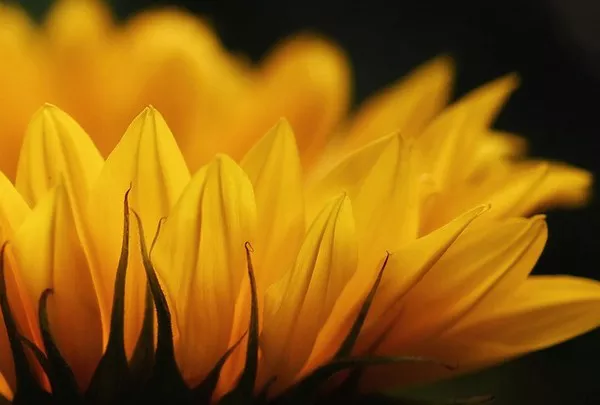Sunflowers (Helianthus annuus) are a delightful addition to any garden, with their bright, cheery blooms and impressive height. But did you know that sunflowers can also play a crucial role in promoting the growth and health of other plants in your garden? By carefully selecting companion plants for sunflowers, you can create a harmonious and thriving garden ecosystem. In this article, we will explore the benefits of planting sunflowers alongside specific companion plants, enhancing your garden’s biodiversity, pest management, and overall productivity.
Understanding Companion Planting:
Companion planting is an ancient gardening practice that involves growing different plant species in close proximity to benefit each other in various ways. Some plants exhibit natural synergies that can improve soil fertility, deter pests, or attract beneficial insects. When it comes to sunflowers, their tall stature and sunny disposition offer unique opportunities for strategic companion planting.
1. Corn (Zea mays):
Sunflowers and corn make excellent companions in the garden. This classic Native American trio, known as the “Three Sisters,” involves planting corn, beans, and squash together. The tall sunflower stalks provide support for climbing beans, while the corn offers shade to the sunflower’s roots during hot summer days. In return, the sunflower’s tall stems can act as a windbreak for the corn, protecting it from strong gusts.
2. Marigolds (Tagetes spp.):
Marigolds are renowned for their ability to repel various pests, including nematodes, aphids, and whiteflies. Planting marigolds around your sunflowers can help protect them and neighboring plants from destructive insects. Moreover, marigolds add a splash of vibrant color, complementing the golden hues of the sunflowers.
3. Nasturtiums (Tropaeolum spp.):
Nasturtiums are not only visually stunning with their bright, edible flowers but also beneficial for your sunflowers. These attractive plants act as a natural deterrent to aphids, whiteflies, and squash bugs. Additionally, nasturtiums are known to attract predatory insects like ladybugs, which help control harmful pest populations in the garden.
4. Cucumbers (Cucumis sativus):
Growing cucumbers alongside sunflowers can be a mutually beneficial arrangement. Sunflowers provide support for cucumber vines to climb, saving space in your garden and reducing the need for trellises. In return, the cucumber’s sprawling vines create shade for the sunflower’s root system, preventing it from drying out too quickly during hot spells.
5. Borage (Borago officinalis):
Borage is a versatile herb with attractive blue flowers that serve as a magnet for bees and other pollinators. By planting borage near your sunflowers, you can boost pollination rates, resulting in better seed and fruit production for both plant types. Additionally, borage enhances soil fertility by accumulating trace minerals and making them available to nearby plants when it decomposes.
6. Radishes (Raphanus sativus):
Radishes are quick-growing root vegetables that can help break up compacted soil around the sunflower’s root zone. Their root system penetrates the soil deeply, creating channels for air and water to reach the sunflower’s roots more effectively. This improved soil aeration promotes healthier and more robust sunflower growth.
7. Beans (Phaseolus vulgaris):
Planting beans near sunflowers allows for a beneficial exchange of nutrients. Beans are nitrogen-fixing plants, meaning they convert atmospheric nitrogen into a form that plants can utilize. Sunflowers, on the other hand, have high nitrogen requirements. By growing beans nearby, you can enhance the soil’s nitrogen content, supporting the sunflower’s growth and overall health.
8. Mint (Mentha spp.):
Mint is a fragrant herb that helps repel pests like ants, flea beetles, and aphids. Planting mint near sunflowers can help protect them from these nuisances while adding a pleasant aroma to your garden. However, be cautious when planting mint, as it can become invasive and take over the garden if not contained.
9. Zinnias (Zinnia elegans):
Zinnias are lovely flowering plants that attract butterflies and other pollinators. When grown alongside sunflowers, zinnias encourage biodiversity and create a visually appealing display. The presence of additional pollinators helps increase cross-pollination rates, leading to healthier and more genetically diverse sunflower plants.
10. Dill (Anethum graveolens):
Dill is a herbaceous plant that attracts beneficial insects like ladybugs, lacewings, and parasitic wasps. These insects are natural predators to many garden pests, including aphids, caterpillars, and mites. By planting dill near sunflowers, you create a haven for these helpful insects, allowing them to thrive and provide natural pest control services for your garden.
Conclusion
sunflowers are not only captivating in their own right but also powerful allies when it comes to companion planting. By selecting the right companion plants, you can maximize the potential of your garden, creating a harmonious and productive ecosystem. The strategic placement of sunflowers with complementary species offers numerous benefits, from improved soil fertility and pest management to increased pollination rates and biodiversity. So, the next time you plan your garden, consider the remarkable impact of companion planting with sunflowers and witness the wonders it can bring to your gardening experience. Happy planting!


